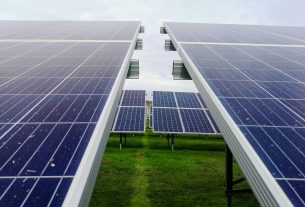China is continuing its transformation in energy production, achieving a significant milestone: for the first time, the installed capacity of renewable energy has surpassed that of conventional sources. This development highlights China’s commitment to a more sustainable energy future.
Renewables Outpace Fossil Fuels in China
China is advancing its energy transformation, with renewable energy sources now constituting the majority of the country’s installed electricity capacity. As of the first five months of 2024, renewable energy, including wind, solar, and hydropower, accounts for nearly 52 percent of the total installed capacity, surpassing fossil fuels, which make up just over 46 percent. Nuclear energy plays only a minor role. These figures were released by the National Energy Commission.
This year, nearly 89 percent of the newly installed capacity came from renewable energy sources, with solar power leading the charge. Approximately 79 GW of new solar panels were installed, followed by nearly 20 GW from new wind energy installations.
In contrast, only 11 percent of the new electricity capacity in the first five months came from coal-fired power plants, which is almost 10 GW less than in the same period last year.
Only one new nuclear power plant was commissioned this year: the TMSR-LF1, a thorium molten salt reactor. The TMSR-LF1 is primarily a research reactor, marking China’s first foray into this promising next-generation technology. Thorium reactors are considered to be safer and more efficient, using thorium instead of uranium and potentially producing less radioactive waste and posing a lower risk of meltdowns. The TMSR-LF1 aims to advance this innovative technology further.
China’s first fully domestically developed third-generation reactor, Taipingling 1, near Guangzhou, has begun its test operations and is expected to be connected to the grid next year. Two more reactors are planned for the coming years at the same site.
Climate Goals Demand Greater Effort
While China’s progress in expanding renewable energy is impressive, the numbers alone are not sufficient to meet its climate goals. To achieve a 30 percent reduction in CO2 emissions by 2035 and carbon neutrality by 2060, China must add 225 GW of solar and 50 GW of wind power annually starting this year. Additionally, CO2 emissions from steel production need to be significantly reduced. The target for wind energy is likely achievable, as the new installations last year already reached 60 GW. However, the solar energy target will require a slight increase from last year’s 210 GW of new capacity. Steel production is planned to decrease by 10 percent starting in 2025. This year, an 8 percent reduction has been achieved so far. However, there is a conflict of interest: China is trying to push more steel into the global market to offset the domestic demand decline caused by the real estate crisis.
In conclusion, while China’s renewable energy sector is advancing rapidly, achieving its ambitious climate goals will require even greater effort and strategic planning.



